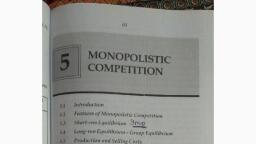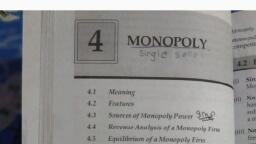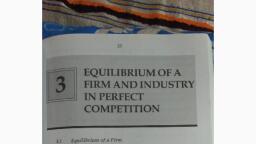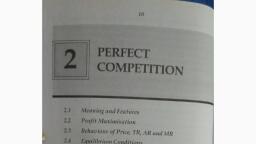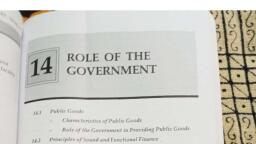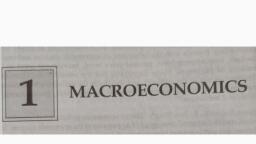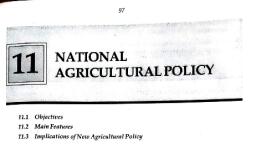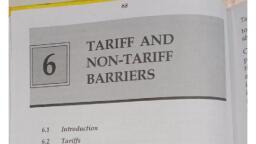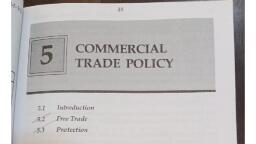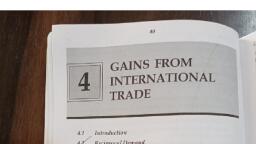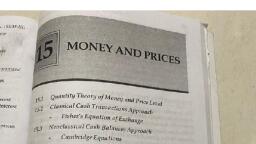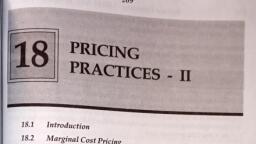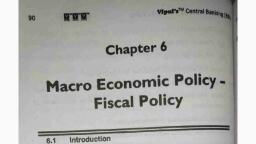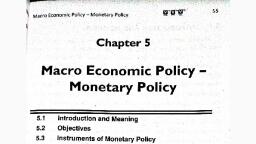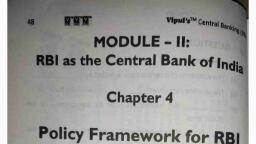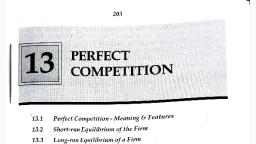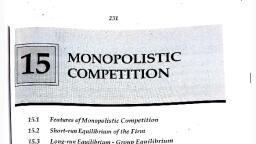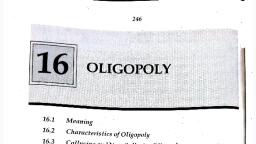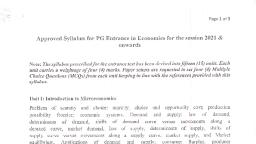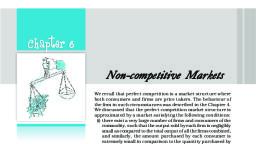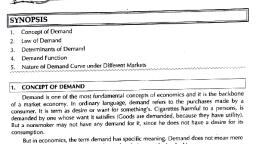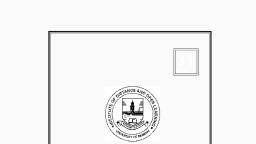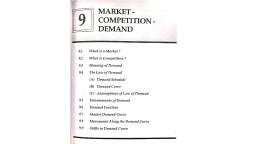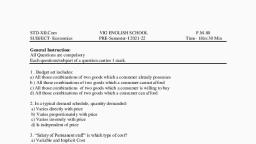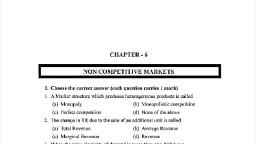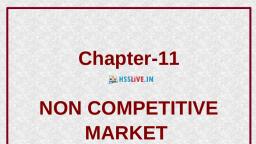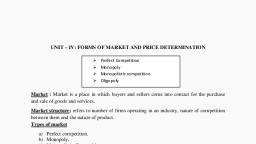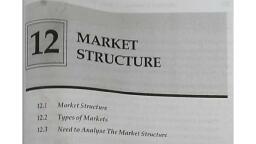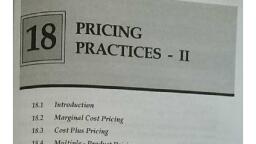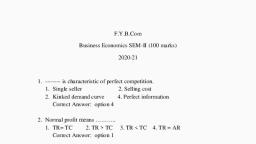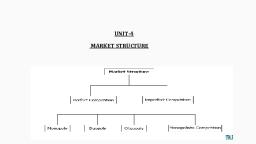Page 1 :
Syllabus, Ma, Qu, All, Market Structure : Perfect Competition and Monopoly, (10 Lec.), Perfect competition and Monopoly models as two extreme cases, profit maximisation and the competitive firm's supply curve-, Short run and long run equilibrium of a firm and of industry -, monopoly Sources of monopoly power- short run and long-, run equilibrium of a firm under Monopoly, Pricing and Output Decisions under Imperfect Competition, 2., (15 Lec.), Monopolistic Competition : Competitive and monopolistic, elements of monopolistic competition - equilibrium of a firm under, monopolistic competition, monopolistic competition verses perfect, competition- excess capacity and inefficiency- debate over role, of advertising (topics to be taught using case studies from real, life examples), Oligopolistic markets: key attributes of oligopoly Collusive, and non collusive oligopoly market - Price rigidity - Cartels and, price leadership models (with practical examples), (10 Lec.), 3 Pricing Practices, Cost oriented pricing methods : Cost - plus (full cost) pricing,, marginal cost pricing, Mark up pricing, discriminating pricing,, multiple- product pricing - transfer pricing (case studies on how, pricing methods are used in business world), (10 Lec.), Evaluating Capital Projects, Meaning and importance of capital budgeting- steps in capital, budgeting +Techniques of Investment appraisal : Payback, Period Method, Net Present Value Method, and Internal Rate of, Return Method (with numerical examples), IV
Page 2 :
Question Paper Pattern, Maximum Marks : 100, Questions to be Set : 06, All Questions are Compulsory Carrying 15 Marks each., Duration: 3 Hrs., Q.No., Particulars, Marks, Objective Questions*, (A) Sub questions to be asked 12 and, to be answered any 10, Q.1, 20, (B) Sub questions to be asked 12 and, to be answered any 10, (* Multiple Choice/ True or False/, Match the Columns /Fill in the Blanks), Q.2, Full Length Question, 15, OR, Q.2, Full Length Question, 15, Q.3, Full Length Question, 15, OR, 15, Q.3, Full Length Question, 15, Q.4, Full Length Question, OR, 15, Q.4, Full Length Question, 15, Full Length Question, OR, Q.5, 15, Q.5, Full Length Question, 10, (A) Theory Questions, (B) Theory Questions, Q.6, 10, OR, 20, Q.6, Short Notes, To be asked 06, to be answered 04, Note : Full length question of 15 marks may be divided into two sub, questions of 7/8 and 10/5 marks.
Page 3 :
MODULE-I: MARKET STRUCTURE : PERFECT, Contents, Page, COMPETITION AND MONOPOLY, Market Structure : Extreme Cases of, 1., Perfect Competition and Monopoly, 2., Perfect Competition.., 10, Equilibrium of a Firm and Industry in, Perfect Competition.., 3., 25, 4., Monopoly., 46, MODULE - II: PRICING AND OUTPUT DECISIONS, UNDER IMPERFECT COMPETITION, 5., Monopolistic Competition, 63, 6., Oligopoly..., 90, MODULE-III: PRICING PRACTICES, 7., Pricing Pratices - I., 109, 8., Pricing Pratices - II., 121, MODULE-IV: EVALUATING CAPITAL PROJECTS, 9., Capital Budgeting.., 136, University Paper Solutions (UPS), - April 2017, 157, - October 2017., 163, April 2018, 169, - October 2018., 178, -April 2019, 185, VI
Page 4 :
1, MARKET STRUCTURE, Page, 1, EXTREME CASES OF, PERFECT COMPETITION, AND MONOPOLY, 10, 25, 1.1, Market Structure, 46, 1.2, Types of Markets, 1.3, Two Extreme Cases, (a) Perfect Competition, 63, (b) Monopoly, 90, 109, 1.1 MARKET STRUCTURE, 121, Market is usually understood as a place where sellers (producers), and buyers meet for settling a transaction. A market is also defined, "as a group of firms and individuals that are in touch with each, other in order to buy or sell some good." In today's situation with, the progress in the communication system, it is not necessary to, have a physical or personal contact in a physical or geographical, market area. Transactions take place through electronic commerce,, mobile commerce or with the help of other communication media., What is essential is to have a communication between the buyer, and seller for settling a transaction., 136, ....., 157, 163, .... 169, 178, Depending on the commodity and supporting factors a market can, be local, national or international. For company stocks / shares the, markets have become national and in certain cases they are, 185, ....
Page 5 :
internationally traded. Currency market is an example of, A given type of market within the market structure depends on many, Business Economics-II (F.Y.B.Com.: SEM, 2., Mar, international market., 2., factors such as (i) nature of commodity, (ii) freedom of entry and, exit. (ii) control over supply, (iv) control over price, etc. Based on, the above and other factors there are different types of markets which, together form the structure of market in the economy., 1.2 TYPES OF MARKETS, A market structure comprises different forms of markets. To which, type a market belongs depends on a number of factors. They include, the number of sellers and buyers, the nature and characteristics of a, commodity, the influence exercised by the sellers or buyers in the, market, the role, need and effects of advertisement or selling cost, and a host of other factors., In this section we are dealing with commodity markets, that is, where, goods and services are bought and sold. In economic analysis,, markets are generally classified into four categories, that is (1) Perfect, eg Competition, (2) Monopoly, (3) Oligopoly and (4) Monopolistic, Competition., 1., Perfect CompetitionGs a market situation where we have a large, number of sellers and buyers, The commodity sold is identical, with no quantitative and qualitative differences. The large, number of buyers and sellers naturally prevent a single seller, 3., or buyer from influencing the price. In a perfect competition a, seller is a price taker. He accepts the price determined in the, market by the total demand and supply. Commodity being, identical there is no scope for any price differential and, discrimination. Both sellers and buyers have complete, information of market which helps establish uniform price., There is no restriction for any person to produce and sell the, existing commodity. So also whoever wants to exit from the, market is free to do so. Examples are market for agricultura, commodities and street food vendors (as suggested by sone, economists) in developing countries. They, however, are only
